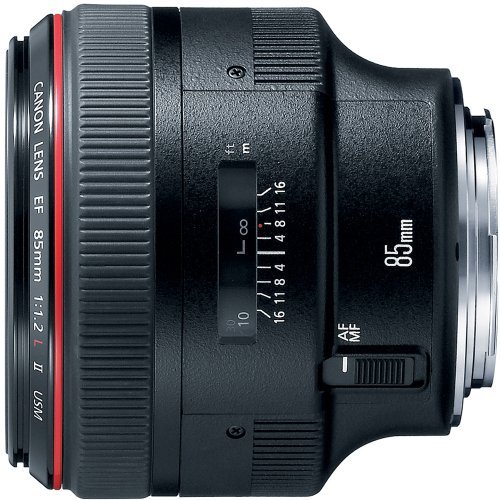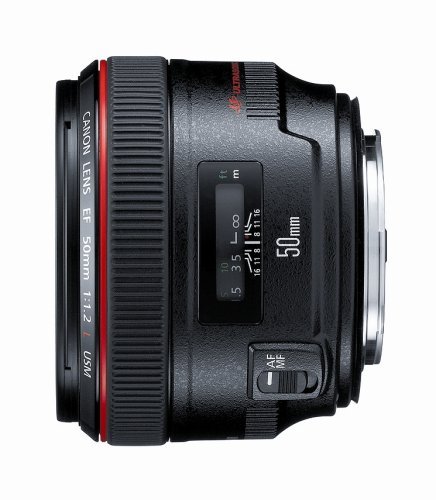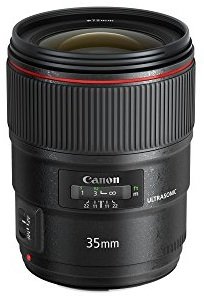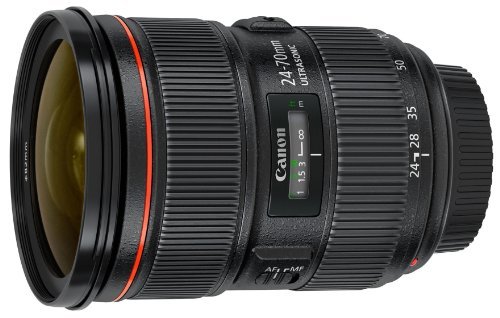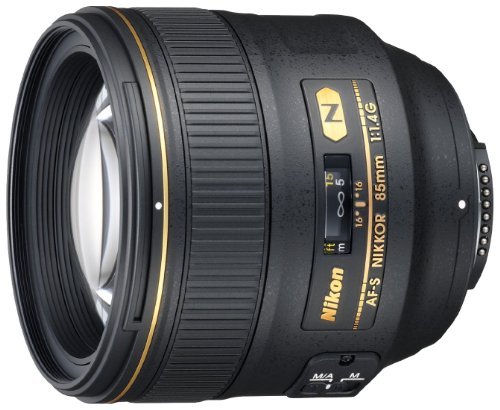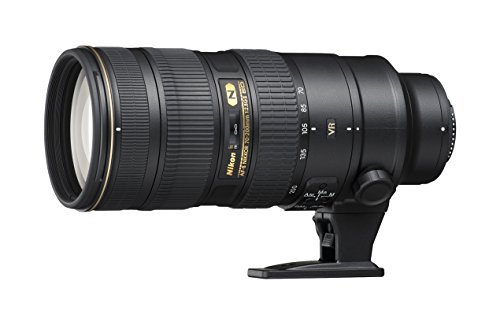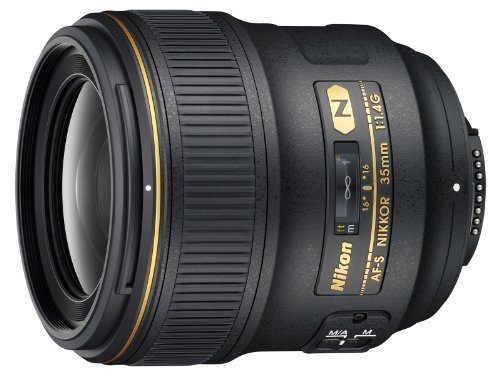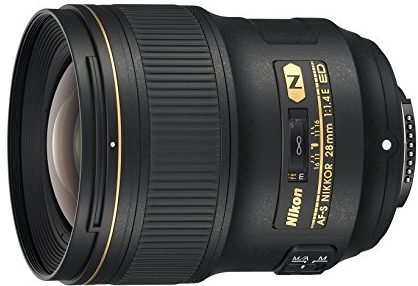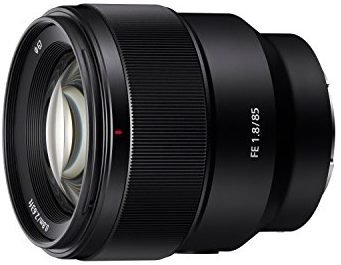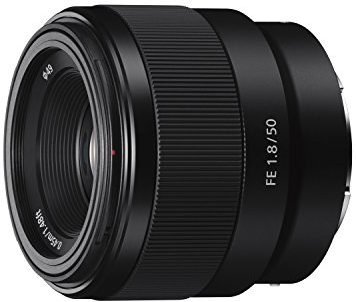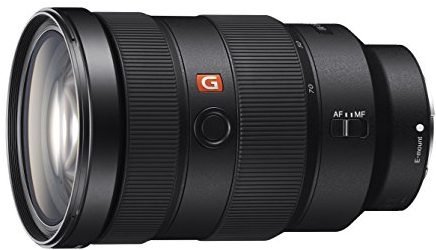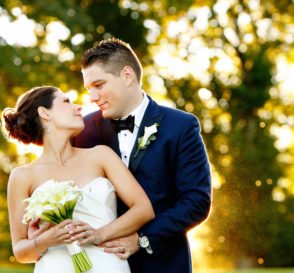In this article, we have reviewed 10 of the best lens for portrait photography including Canon, Nikon, and Sony lenses along with a comparison table and a detailed buyer’s guide to help you choose the best lens possible.
Portrait Photography is one of the pioneers of modern photography techniques. It is one of the very first types of photography that most people fall in love with. You would not realize that in the early stages of photography, you are dealing with portrait photography.
It wouldn’t be wrong to say that among most types of photography, portrait photography is the easiest to learn and adapt to. That’s the reason most photographers today start off their photography career with portrait photography and as a photographer, you must learn all the basic stuff in order to become a professional in the field.
And when you are practicing this particular shtick of photography, it becomes easier for you to elevate yourself to the next level.
In general portrait photography is all about people. We do a lot of portrait photography via our smartphones these days that come up with a high-quality camera. But in order to truly master the art of portrait photography, you must possess a good camera and most importantly; a suitable lens.
When we objectively take a look at this genre of photography, it seems that it is a very basic type but at the same time, it is one of the most challenging ones as well.
Why do you ask?
Well, you see while performing portrait photography, you have to bring the best out of your subject, and since the subject is a variable, changes that you can make are in your lens or camera parameters and that’s where your skillset comes into play.
Unlike other genres of photography like landscape photography or architectural photography where the subject remains intact when it comes to portrait photography, the subjects keep on changing from one person to a whole family of people, so it becomes difficult to adjust characteristics from one situation to another.
That’s why one must never undermine portrait photography.
Now that we know portrait photography isn’t a piece of cake, what we can do is select the best gear that will help us get the best portrait shots. Two of the basic equipment in those are cameras and lenses and today we are going to talk about lenses because I firmly believe that lenses have slightly more importance than a camera when it comes to portrait photography.
So these are the best lenses for portrait photography that are available in the market at the moment.
10 Best Lens For Portrait Photography:
Best Canon Lens for Portrait Photography:
1. Canon EF 85mm f/1.2L II USM Lens
We are starting off with Canon which is as we all know one of the biggest producers of photography equipment and they do have a fair share of good lenses when it comes to portrait photography. The very first on our list is the Canon EF with a fixed focal length of 85mm and a maximum aperture of f/1.2L.
One thing to keep in mind is that you are going to see a lot of lenses on this list with such huge apertures and you will know the reason later on. This lens is a second-generation lens and without a doubt the successor of its previous version.
Now let’s take a look at its features that make it one of the best lenses for portrait photography.
The exterior of the lens makes use of polycarbonate plastic. This plastic has considerably higher strength compared to some regular plastic that is used in most lenses these days. Moreover, it is very high-grade plastic and it looks pretty good so as a result, you get that premier feeling to your lens, and at this price range, you can expect that.
In addition to that, the lens is lighter in weight and compact in size which is just what you would expect from a portrait lens. For the protection of the lens from dust particles or other micro debris, a metal mount is provisioned which is durable and reliable.
This ensures that the lens elements don’t get damaged and work for a longer period of time.
The lens consists of 8 elements which are divided into 7 groups. For the suppression of aberrations aspherical element is utilized and in addition to this, another aspherical element is present whose job is to optimize the image.
Apart from these two, high-refraction elements are also there. When you are working with such a huge aperture, it is expected that the glass used will be relatively larger. So as expected since this lens makes the use of an aperture of f/1.2, the glass used in this is pretty large which might considerably increase the weight to some extent.
One interesting thing about this lens is the shape of its curvature. It is designed in such a way that it will reduce most of the internal reflections. Moreover, there is anti-reflective material within the lens which further minimizes the reflections.
Problems of flare and ghosting are tackled in the lens with the help of Canon’s own super spectra lens elements coating. This coating is made superficially and increases the overall price of the lens. But in hindsight, it has its own perks. Also, color fringing can be reduced with this astonishing coating of Canon.
Both autofocus and manual focus can be accessed in the lens with the slider switch which is located on the left side of the barrel. Compared to the previous version, autofocus in this has improved a lot, thanks to the newly embedded CPU.
The aperture of f/1.2 performs brilliantly in low light conditions. If you are looking for a camera for the sole purpose of night photography, you should definitely go for this one but if you are planning for daylight photography then it isn’t really an ideal choice because maintaining color balance becomes difficult at this aperture.
- The lens is premium and has a high-quality build.
- The aperture is very fast and an ideal option for low-light shooting.
- Bokeh obtained is top-notch.
- Apart from portrait photography, you can even use it for other events types of photography.
- The lens is considerably heavy.
2. Canon EF 50mm f/1.2 USM Lens
After 85mm we have a Canon lens with 50mm and just like the previous lens, it has a maximum aperture of f/1.2. As an overall lens, it was met with mixed reviews, and people were polarized with its performance but when it comes to portrait photography, this lens is a top dog and that’s why we have included this lens in our list.
The best thing about this lens is that its price is very low compared to some modern portrait lenses out there and that’s what makes it a top choice among photographers. Most beginners select this lens for starting their photography venture, though, it has its own deficiencies but the price makes up for it.
There are some lenses out there that show great chart performance like they will show absolute sharpness or no trace of aberrations, ghosts, or flare and unfortunately, this lens right here isn’t one of them.
But here’s an interesting thing, there are also lenses that don’t show good chart performance but when you take a look at the images shot by them, you get surprised since on paper they weren’t delivering great performance but when it came to actual practice, they delivered. Canon EF 50 f/1.2 is one of those lenses.
Surprisingly, the image quality produced by the lens is pretty high and that is by taking into account relatively poor optical performance. Just take a look at some of the portraits caught by this lens and you will find the element of richness and uniqueness within the image which can be defined by words.
So if you are looking for a lens that delivers its performance within the image but not the characteristics go for this one.
Now the autofocusing here in this is tricky. I’d say it’s completely up to how the user makes use of the lens. Some people say that there are significant problems with autofocus while some people haven’t faced such issues.
But on the dominant side, one can say that autofocus is pretty fast and accurate. In addition to autofocus, you can also use an AF servo motor which helps a lot in getting images of dynamic objects without any irrelevancy within the image.
The ultrasonic motor is also employed within the lens but its effect cant is seen in the autofocus because usually, lenses equipped with USM have higher speed compared to what we are getting in this lens. But the good news is that manual focus works just as well as autofocus, all you have to do is make sure you are using it correctly.
- The aperture of f/1.2 produces unique images.
- The lens is less pricey.
- Autofocus has decent quality.
- The lens ls compact in size.
- The lens isn’t sharp.
- There are problems with chromatic aberrations.
3. Canon EF 35mm f/1.4L II Lens
When Canon introduced EF 35mm f/1.4L lens, it was met with widely positive reviews, and at one point it seemed like no lens could surpass the performance of that incredible lens, let alone its successor.
But after some years it launched its second-generation lens which not only beat the first one in many departments but also became one of the best-selling portrait lenses in Canon’s domain. Canon EF 35mm f/1.4L II is one of the best lenses in the popular “L” series of lenses and a treasure for people who have just started out doing photography.
But what makes this lens so good?
Let’s find out!
On the front and rare element of the lens, you will find out fluorine coating which most Canon lenses utilize these days. It does the job of providing protection to the lens against dust particles and water droplets.
Though this feature doesn’t hold much significance when it comes to portrait photography there are some instances like when you go out for a family trip where you would want to get portrait shots in an open environment. Another advantage of this is that cleaning the lens becomes easy.
Just take a cloth and a single wipe will do the job for you. The engineering in the barrel is finely done and no open spaces are there, the barrel is completely sealed so whenever you are focusing, internal elements don’t get exposed. Externally lens just looks mediocre, not specifically mediocre but when you compare it with some other lenses by other companies; you will find a significant difference in aesthetics.
The lenses with huge apertures have to move a lot of elements, so the effort required is comparatively more and that’s the problem faced in most prime lenses because they are usually equipped with a larger aperture.
But this lens right here doesn’t let that fact hinder the performance of autofocus. Even after having to move more glass elements, the speed produced by autofocus is pretty good and it is on point which makes this Canon lens one of the lenses with the best autofocus. Autofocus works brilliantly even in instances other than portrait photography.
The only problem you might encounter with this Canon is that there will be a little noise created when you are focusing but since portrait photography doesn’t really require a quiet operation, it can get the pass.
- The lens is engineered brilliantly with no spaces.
- It is rigid and robust.
- It can work under different circumstances.
- Autofocus is fast and accurate.
- It is large and heavy.
4. Canon EF 24-70mm f/2.8L II USM Standard Zoom Lens
So here is the last inclusion from Canon in this list of best lenses for portrait photography. This time we got a zoom lens with a focal length of 24-70mm and a constant maximum aperture of f/2.8 and this is a second-generation lens.
Now you might be wondering what good use will a zoom lens does in portrait photography.
Usually, these types of lenses are employed for landscape photography but since the evolution of lenses, some of the lenses haven’t limited their usage to a single type of photography and this lens right here is one of them.
Though the lens is preliminarily built for landscape photography when it comes to portrait photography, it doesn’t hold back. Its aperture of f/2.8 has a major contribution in making its name into the list and which we will see later on.
The build quality of this lens is extensively enhanced and when you compare it to the previous lens, you will see a far greater quality. The robustness and rigidness in the lens have met the highest levels which makes this lens one of the best out there for damping shocks and vibrations.
Though, this feature is more helpful for landscape photography who cares, as long as you are getting additional perks, right?
Just like the previous lens, it has a fluorine coating on both the frontal and rear elements to prevent the entry of dust and moisture into the lens. You can expect the coating in most of the high-end Canon lenses.
Now comes the part which makes this lens very useful for portrait photography, the aperture of f/2.8. There are two reasons why this aperture is so important. First is that you don’t get this large aperture in zoom lenses.
Just take a look around and you will find that in this price range, it is difficult to come across a lens that offers such a high aperture. Many would argue that even if there is an aperture of f/2.8, it won’t do any good because most portrait lenses are equipped with an aperture of f/1.4 or f/1.8 or in between them.
But here’s the thing that most people miss out on. This is a zoom lens, not a portrait lens, which means that there is no restriction on fixed focal length. Sure the aperture is somehow of lesser quality compared to prime lenses but the opportunity that you get to explore a lot of options from this lens is something that shouldn’t be overlooked.
A lot of photographers like to put their creative heads into photography, even if it is something as one-dimensional as portrait photography, that’s why if you are looking for something that can enable you to do experimentation then go for this amazing Canon lens.
- The lens doesn’t have a fixed focal length which gives you a lot of creative freedom.
- For a zoom lens, it is compact.
- The lens is optically balanced.
- Sturdy and robust.
- The aperture is inferior to some of the above-mentioned lenses.
Best Nikon Lens For Portrait Photography:
1. Nikon 85mm f/1.4G
So that was all about Canon, now let’s take a look at some of the best lenses for portrait photography by Nikon. Just like Canon, Nikon is also famous for endlessly manufacturing top-quality lenses and portrait photography is one of their strongest domains.
The very first one from Nikon is a lens with 85mm of focal length and an aperture of f/1.4. We’ve already seen a lens with 85mm in the list but it was from Canon and it had a different aperture. But since focal lengths are the same there will be some similarities but obvious differences will be there as well.
One of the significant features of the lens is its maximum aperture of f/1.4 which is an obvious thing when we are talking about portrait photography. This aperture is very suitable when working in low light conditions.
Though, while working in broad day sunlight, there might be some deficiency in the quality of the image but not to the point where it is not acceptable. You could say that it is decent. But in regions where there is the depravity of light, the lens works pretty well and provides optically enhanced images.
Since we are keeping the shtick of portrait photography in mind we must not forget that usually shots are taken at low light conditions; that’s why the aperture plays a very important role within the lens.
Nikon has put a lot of marketing efforts into its nano-coating and this nano-coating is also present within this lens. I’ve got to say, this coating is not all about hype and it performs exceptionally well. Though the function of this coating was said to be balanced and improved contrast addition to that, it also reduces ghosts and flares to some extent.
This helps a lot in optically enhancing images and adding a nice mixture of colors to the images produced. Autofocus in this is as good as ever but the surprising thing is that manual focus in this performs remarkably too.
One great thing about autofocus is that it is extremely quiet in operation which you don’t usually see in portrait photography. Switches are available on the side that can be used to toggle between manual focus and autofocus.
- For a portrait lens, the bokeh you get within the image is extraordinary.
- There is an amazing balance between color and contrast.
- Purple fringing is minimized.
- Solid build quality.
- Nothing worth mentioning.
2. Nikon 70-200mm f/2.8G VR II
We originally planned on including the 70-200mm version of Canon in the list but the 70-200mm version of Nikon was found slightly better, hence it made the list. So this right here is a zoom feature from Nikon which is one of the best in the market at the moment for portrait photography.
It has almost the same features as Canon 24-70mm except for the focal length and vibration reduction technology. So let’s take a look at different things that set it apart from Canon’s 70-200mm and eventually make it a special lens for portrait photography.
Usually, lenses of such caliber have good build quality but this lens right here takes that to a whole new level. I mean, it doesn’t even feel like a lens at some point, it feels like you are carrying some finely crafted top-grade equipment along with you.
The lens is very costly and you can see the reason when you put your eyes on the lens. As a primary feature for a zoom lens, the lens is dustproof and waterproof but to be honest, proofing in this is not the best.
I’d recommend not using it in harsh conditions but for portrait photography, there are no issues. The lens isn’t lighter and you can expect additional weight from a zoom lens, add solid construction to that and you get this huge weight. This could be a potential problem for some people who don’t like carrying around heavy things.
From a technical standpoint, the lens is pretty neat. Sharpness is some of the best you will see, heck I would go on and say that the sharpness obtained in this is the best among the lenses of this range.
There are no traces of vignetting, the color balance is outstanding and there is no problem with color fringing. Contrast too is well-adjusted along with reduced chromatic aberrations, ghosts, and flare. Apart from portrait photography, this lens can also be used for landscape, architectural, and some similar types of photography.
The overall lens is optically elite. Though, one thing to keep in mind is that this lens is not suited for beginners, if you are a pro in the field, then only buy this lens.
- The lens is versatile.
- It sits right at the top in terms of build quality.
- The optical performance of the lens is ideal.
- The lens is durable.
- The lens is huge and heavy.
3. Nikon AF Nikkor 35mm f/1.4G
Another prime lens in this list and this time it is one with a fixed focal length of 35mm. Canon also has its own 35mm version with a similar aperture. There are some departments where this lens beats its counterpart from Canon and some departments where it falls short.
For instance, one of the best things about this lens is the versatility it offers. Though even Canon’s version is capable of working under different conditions the quality of images obtained in a different genre of photography isn’t up to the mark.
On the other hand, Nikon’s version produces just as good as any other special lenses that are designed for a particular type of photography.
The aperture can vary from f/1.4 to right up to f/16 without any stops with the angle of view of 63 degrees which provides a lot of room for experimentation. The size of the lens could be a big concern for some people because, for a prime lens, it is huge.
Usually, prime lenses are compact and their weight is considerably low but in this lens, it is the opposite. Though weight isn’t really that problematic issue because it is within the limits but it’s the size that can bother. The exterior is well-built and has good strength to it.
It is preliminarily plastic but the design has made it workable in different situations. Ergonomics too are well taken care of with ease of access to controls.
Focusing can be done via both autofocus and manual focus. For manual focus, a focus ring is there which can be smoothly gripped and performed efficiently. As far as the autofocus goes, I have got to say, this is one of the quietest I’ve witnessed from a lens by Nikon.
Another great thing is that very minimal movement is required for elements to be moved which we don’t usually see in prime lenses because a lot of effort is required for moving elements while focusing or defocusing.
As usual, the provision of a silent wave motor is there within the lens whose job is to enhance the performance of autofocus by making it faster and quicker.
You can also fine-tune your pictures if some parameters are overlapping and hampering the quality of the image.
- The images obtained are sharp, bright, and without any distortion.
- The lens is versatile.
- It offers good resistance against gloomy weather.
- Autofocus is quicker and faster.
- The lens is pretty large for a prime lens.
4. Nikon AF-S Nikkor 28mm f/1.4E ED Lens
And the last lens from Nikon in this list of best lenses for Portrait photography is Nikkor’s own 28mm f/1.4E ED lens. The focal length of 28mm holds a classic status and photographers from all over the globe just love it. It is popular among both amateurs and professionals.
The focal length just lies right in the middle, which is why it is the first choice for most photographers. Nikon has done a pretty good job in producing its own version of 28mm and it is probably the best one among all lens manufacturing companies. With some of the most staggering features, this lens is one of the best when it comes to portrait photography.
The lens is optically balanced; you will find that there are 14 elements that are divided into 11 groups. The “ED” in the name indicates that there are extra-low dispersion elements present within the lens, in fact, there are two of them. The specific purpose of this element is to reduce ghosts and flare and practically too they perform their job brilliantly.
Along with this, there are 3 aspherical elements as well for the optical enhancement of the image. The aperture consists of 9 bladed diaphragm which produces beautiful bokeh. Shooting objects that move at a relatively higher speed is also possible without any drop in quality with the use of this aperture.
Operating is really easy to handle, in fact, it has one of the most ergonomically balanced structures among all of Nikon’s lenses. Performance-wise, the lens is top-notch. Right from the aperture of f/1.4 to f/16, there is no degradation of the sharpness and there is a minimal amount of soft corners.
Some of the variants of 28mm suffer from the problem of reduced sharpness at the corners but no such problems are found with this lens. Chromatic aberrations are almost negligible, courtesy of the optical design of the lens, and in addition to that, there are no traces of color fringing.
- Images are free from flare and aberrations.
- Distortion is very minimal.
- The lens is optically enhanced.
- Handling is pretty easy.
- Autofocus is comparatively slower.
Best Sony Lens for Portrait Photography:
1. Sony FE 85mm f/1.8
Now that we are done with Canon and Nikon lenses, it’s time we put some light on Sony lenses that can be used as a remarkable prospect in order to perform portrait photography.
This lens makes it the 3rd 85mm lens to be enlisted into the list and actually, it was the first-ever 85mm lens among all lens manufacturing companies. So compared with modern lenses, there might be some absences in this lens but its absolute classic status is what makes it a notable prospect.
The build of the lens is actually pretty good but not to the extent that it satisfies the price of the lens. Aesthetically there is a lot of room for improvement but physically, this lens checks all the boxes. The body is plastic and it is hard and sturdy with a focus ring over it that can be gripped smoothly.
A metal mount is utilized for covering the lens which increases the weight of the lens to some extent.
Surprisingly, the autofocus of the lens works super fine. There aren’t any cut corners and autofocusing is quick and accurate without the slightest notion of noise. It works brilliantly in both static and dynamic situations and a maximum aperture of f/1.8 is enough to get photos in the lowest of lights.
Though there are problems with vignetting the good news is it is present only at wider apertures. Another good news is that there is no inclusion of distortion so the images that are produced by the lens are sharper and balanced.
- The lens has a sturdy build.
- It can be a top choice for beginners.
- No distortion.
- Autofocus works like a boss.
- The lens is aesthetically mediocre when compared to Canon & Nikon lenses.
2. Sony FE 50mm f/1.8
If you are a beginner and looking for a budget-friendly portrait lens that works as well as any other reliable lens then Sony FE 50mm f/1.8 can do the job for you.
Moreover, the lens is not only limited to portrait photography and allows you to perform different types of photography at your convenience which you don’t usually see with prime lenses that too at such a low price.
50mm of the focal length is very suitable for all-around photography and that’s the reason it is recommended for beginners. It has an adequate angle of view and provides optimum subject distance which enables it to get the pictures in their best form.
The aperture of f/1.8 worked pretty well. Though compared to some of the lenses on the list, the aperture isn’t that remarkable but since the lens is less pricey and lighter, it makes up for that insufficiency.
The lens comes up with In-Body Image Stabilization which means that the image stabilization system is present within the lens and there are no switches to access it. This image stabilizer is nothing compared to Canon or Nikon’s stabilizers but you couldn’t really ask for more at this price.
- The lens is quite cheap.
- The lens is beginner-friendly.
- It can work as an all-around lens.
- It is lighter in weight.
- The image stabilizer isn’t that outstanding.
3. Sony FE 24-70mm f/2.8 GM
The last lens in this list is a zoom lens by Sony with a focal length of 24-70mm and a maximum constant aperture of f/2.8. We’ve already mentioned the 24-70mm version of Canon on the list and there is some serious competition between these two lenses.
This lens employs the G master designation which is considered to be the highest grade among Sony.
Talking about optical construction there are a total of 18 elements with 13 groups. Among these, Sony has introduced 5 special elements that do the job of optically enhancing the quality of the image. The circular aperture as usual consists of 9 blades with which getting out of focus areas becomes more convenient.
There is an absence of image stabilization in the lens which is the only possible letdown because portrait photography requires you to perform handheld photography and if there is no provision to compensate for shocks and vibrations, it might cause trouble.
But if you are a professional, you won’t face any problems.
- The lens provides nice bokeh.
- The use of 5 special elements takes the technicality of images to a whole new level.
- Smooth zooming.
- Spectacular sharpness.
- No image stabilization.
Buying Guide For Best Lens for Portrait Photography:
Whenever you are going off to buy a lens most suited for portrait photography, you must consider some factors that can influence your photography experience. These are those factors:
Type of lens
Either zoom lens or prime lens, you have to choose between two of these. Both of them have their own perks and shortcomings.
For instance, zoom lenses offer you versatility with their wide focal range and allow you to go on longer photography sessions without having to make any changes in gear but at the same time they are comparatively larger and heavy and some of them are more expensive than prime lenses.
On the other hand, prime lenses offer a much better quality of images and are most suited for portrait photography, in addition to that they are compact and easy to carry around but the only problem is that they have fixed focal lengths so there isn’t any room for experimentation.
Focal Length
The factor of focal length totally depends on the situation of shooting. Things that influence focal length are the type of location, number of people, environment, and focusing distance. There are a lot of focal lengths that suit portrait photography but usually, focal lengths of 50mm or 85mm are preferred.
Bokeh
It would be nice to have that beautiful out-of-focus area within the image. Bokeh is that blurred region that isn’t part of the main subject and since portrait photography involves focusing on the main subject, bokeh proves to be a vital aspect in defining the quality of the image.
To get good bokeh you should select a lens with a larger aperture, usually from f/1.2 to f/1.8, even f/2.8 would work. Moreover, having larger bokeh enables you to perform adequate photography in low light conditions.
Conclusion
Mentioned above are the best lenses for portrait photography. All of these are qualified to perform exceptionally well but getting Nikon 70-200mm f/2.8G VR II or Canon EF 24-70mm f/2.8L II USM Standard Zoom Lens would be the wisest choice in my opinion because they offer a lot of versatility.
